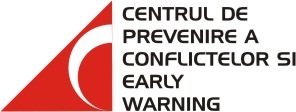Little has been heard about the Club of Rome over the past few years. Weak PR, one might say. But the 40-year old Club of Rome has carried on its activity, consisting in debates and research on all continents. The tremendous echo of its first report, “The Limits to Growth” (1973), sold in millions of copies and having made a lasting impact on an entire generation in the ‘70s, has never faded out.
However, one cannot live off one’s past glory. While other reports were quite valuable, too, with at least a dozen translated into tens of languages, scores of think-tanks have emerged which focus on one topic alone—environment, population, food, water, education. The UN also tackles the global problems of mankind on an individual basis, in important, much-publicised conferences. The global problems of mankind are easy to identify, from climate and natural resources to the manifest inequity of the economic gap between privileged societies and masses subject to under-development, famine, poverty and disease. But a novel approach would revive the self-preservation interest of humanity (that some people already regard as an endangered species, or at least about to become one) by means of new, appropriate steps of a civilisation which is currently wasting its resources on destructive goals or moot, irrelevant or downright harmful areas. Civilisation is called upon to end the decline, and cultures to contain their rashness and join efforts in order to rescue the human family, as Toynbee would have said. The Club of Rome deserves full credit for having tackled them together, as parts of what it calls the “world problematique.” It is the champion of synthesis.
And with its September 2007 annual conference in Madrid, the Club of Rome sees a turning point in its history. It gains visibility and self-confidence, selects relevant topics and, more importantly, it regains its sense of action, and does not shy from challenging errors and preconceptions, even when reinforced by the mass media. Meadows, one of the authors of the first report, opened the works with a radical warning: either change, or close down. But the assembly would not agree with his dramatic and drastic criticism. There are active ARCOR associations (28 in Europe, scheduled to convene in Bucharest in 2008, an associated youth organisation–T.T.T) whose dynamism is inspiring, which are up to date on the world problematique and which, although small, are visible on all continents (Latin America was the continent of choice for a while).
One aspect referred to in Meadows’ address was accurate: the “bureaucratic erosion” which has impaired the world’s most “non-organisation-like” informal group—because originally the Club of Rome was truly a club. It had no registered offices, regulation, budget, board and committees, no voting. Consensus was rapidly reached by people concerned with the vital problems facing mankind—whether they were academics, researchers, business people or artists. But a European-style secretariat was set up, and three decades later the Club had all the ingredients of the bureaucracy it had initially avoided. Vision and management are indeed conflicting. But never again, I think, will we see times like the ones when a phone conversation of founder Aurelio Peccei with the Prime Minister of Sweden or Chancellor of Austria would settle all details for a CoR conference organised and financed by a host country happy to have the meeting held in Uppsala or Salzburg. In this conference, for instance, a new secretary general was elected (a natural born manager, Martin Lees—former head of the United Nations University for Peace in Costa Rica), the head office was transferred from Hamburg to Zurich, two co-presidents were elected—a European one (von Koerner) and an Asian one (Ashok Khosla, in charge with Club strategies)—along with a honorary president—Spain’s Ricardo Hochleitner.
The papers and debates confirmed the non-apocalyptic scenario of the CoR revival. There were countless relevant papers, concerning on-going projects or new plans. Worth mentioning are the “international megaprojects” which hold great promise for the improvement of the standards of living and, more importantly, for the interaction of the populations which choose to cooperate rather than fight. For the time being, megaprojects are the accomplishments of developed or emerging economies (islands merged and turned into aerodromes, bridges across rivers or bays, large hydropower plants, etc.). But the launch of regional megaprojects will entail peace and welfare, that is, civilisation embraced. In fact, the Club of Rome has never encouraged the self-pitying and traditionalist cultures which perceived technology as a threat to their values. What it did encourage and illustrate best was the diversity of cultures. Another integrated topic was knowledge (the knowledge era), science, technology and learning (preferred over education), as CoR has the opportunity and capacity to better explain the “hidden treasure” of research-development, which has turned and will continue to turn poor countries into rich ones. Education included, since human development is a valuable resource. The Club of Rome may regain a vocation that it illustrated better in its early existence: prospection, or envisioning the future. The ability to analyse and predict the natural and man-made threats facing mankind. The Club has always been concerned with the recurrence of flawed or absent planning by political decision-makers, and with the inefficient, unproductive or harmful strategies that they adopt, whether to impress others or to promote their own interests. This is why the Club brings together politicians, scholars and academics, economists and bankers, and civil society leaders.









